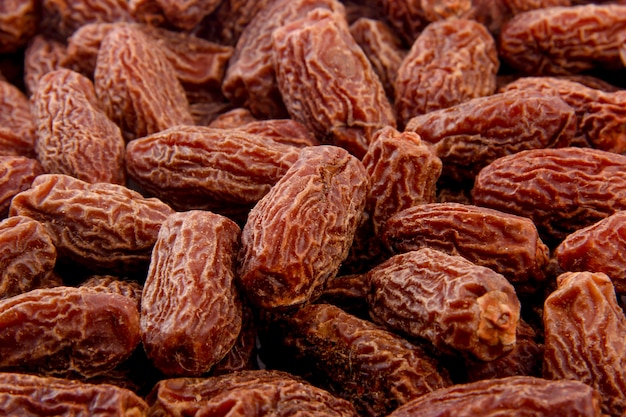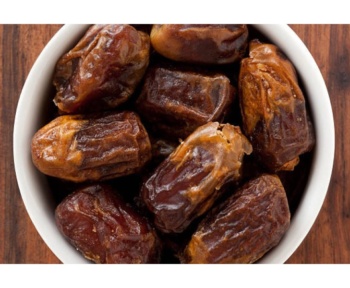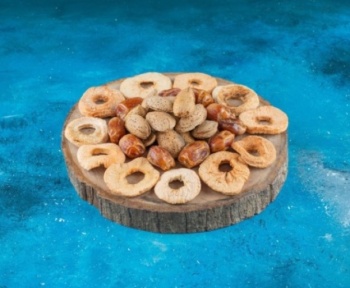Introduction
You’re not alone if you’ve ever wondered what the difference is between fresh and dried dates. Dates have a fascinating transformation from fresh to dried. While both forms are delicious, they have distinct textures, flavors, and uses. Understanding these differences can help you get the most out of your dates, whether you’re snacking, baking, or using them in cooking. Ready to dive in? Let’s go!
What Are Dates?
Dates come from the date palm tree, which is found in hot, sunny places. They’ve been around for thousands of years, and with good reason – these little fruits are packed with natural sweetness, fiber, and essential nutrients. They’re a staple in Middle Eastern, North African, and Mediterranean diets. Still, they’ve found a place worldwide, especially for people seeking healthier ways to satisfy a sweet tooth.

Popular Date Varieties
Not all dates are created equal. There are a few varieties, each with flavor, texture, and best uses. Here’s a quick rundown of some of the most popular ones:

Pick your favorite, and you might find yourself constantly reaching for them!
Fresh Dates vs. Dried Dates: Quick Comparison
So, what makes fresh dates different from dried ones? It’s all about moisture and sweetness. Here’s a side-by-side comparison to clear things up:

Whether you like the soft, juicy bite of fresh dates or the chewy, intense sweetness of dried dates, both have their place in your pantry.
What Fresh Dates Look and Feel Like
Fresh dates are unmistakable. They’re soft and sticky, and their skin is smooth and shiny. Depending on the variety, they range from golden yellow to light brown. When you bite into one, you get a soft, moist texture with a light, mild sweetness. Their high moisture content makes them ideal for keeping in the fridge.
What Dried Dates Look and Feel Like
Dried dates are another story. They’re usually darker—deep brown or almost black—and have that familiar wrinkled skin. The drying removes moisture, leaving a firm, chewy texture, and a much sweeter taste. Dried dates can last long and be stored at room temperature, making them perfect for keeping around as a long-lasting snack or ingredient.

How to Tell Fresh Dates from Dried Dates
Identifying fresh dates from dried ones is easy once you know what to look for. Here’s a quick checklist to guide you:
- Look at the Skin: Fresh dates are smooth and shiny, while dried ones have wrinkled skin.
- Feel the Texture: Fresh dates are soft and sticky; dried dates are firmer and chewy.
- Taste the Sweetness: Fresh dates have a light sweetness, whereas dried dates are way more intense.
- Check the Color: Fresh dates are light golden or brown, while dried dates are darker.
- Packaging: If the packaging says “fresh” or “dried,” that’s a dead giveaway!
You’ll be a dating expert in no time.
Why Fresh Dates Are Great
Fresh dates might not last as long as dried ones, but they’re worth the short shelf life. They’re packed with natural sugars, fiber, potassium, and antioxidants. Plus, that soft, moist texture? It’s perfect for a quick snack or adding sweetness to a salad or smoothie. Here’s a snapshot of why fresh dates are a good choice:

So not only do fresh dates taste great, but they’re also great for your health.
Why Dried Dates Are Great
Dried dates are a little different but equally fantastic. They’re sweet, nutrient-packed, and last forever (well, almost). The drying process concentrates their sugars, perfect for adding a rich sweetness to desserts or smoothies. Dried dates are also fantastic natural energy boosters thanks to their mix of carbs, fiber, and essential minerals. And when you’re craving something sweet but want a healthier alternative to candy, dried dates are your answer.

Checklist: How to Pick the Best Dates
Picking out dates might seem straightforward, but there are a few things to look for to ensure you’re getting the best. Here’s your go-to checklist:
- Look at the Skin: Fresh dates should have smooth, shiny skin. Dried dates will be wrinkled and dry.
- Feel the Texture: Fresh dates will be soft and sticky, while dried dates will be firmer.
- Check the Color: Fresh dates are golden or light brown; dried dates are darker.
- Look for Seals: Ensure the packaging is intact, especially with dried dates.
- Read the Label: Want organic? The label will tell you everything you need to know.
This checklist lets you easily pick out the best dates for your needs.
Tips for Storing Dates
How you store dates matters, whether they’re fresh or dried. Here are a few tips to keep your dates in tip-top shape:
- Fresh Dates: Keep them in the fridge in an airtight container to maintain their softness and moisture.
- Dried Dates: Store them in a cool, dark spot like a pantry or the refrigerator for extended freshness.
- General Tip: Keep your dates away from sunlight—exposure can dry out fresh dates and affect the taste of dried dates.
Simple enough?

How to Use Dates in the Kitchen
Dates are super versatile and can be used in all kinds of dishes. Here’s how you can get creative with both fresh and dried dates:
Fresh Date Ideas
- Stuffed Dates: You can stuff fresh dates with cheese, nuts, or bacon. They’re the perfect bite-sized treat.
- Smoothies: Throw fresh dates into your blender for a natural, creamy sweetness.
- Salads: Chopped fresh dates can add a nice sweetness to any salad.
Dried Date Ideas
- Energy Bars: Blend dried dates with nuts, oats, and other ingredients for homemade energy bars.
- Baking Substitute: Use dried date paste to reduce sugar and add a natural sweetness.
- Savory Dishes: Dried dates pair wonderfully with savory dishes like tagines and stews. They add just the right amount of sweetness.
Why Date Sustainability Matters
Choosing dates from sustainable sources is a great way to support eco-friendly practices. Opting for organic or fair-trade dates means supporting farmers who care about their environment. Plus, you’re helping to ensure workers are treated fairly. When you buy sustainably sourced dates, you do your part for the planet.
What Experts Say About Dates
Nutritionist Jane Doe says, “Dates are a great snack for anyone looking for a natural sweetener or a quick burst of energy. Fresh or dried, they both offer benefits, but fresh dates are a bit more hydrating.”
Conclusion
Now that you know how to spot fresh versus dried dates, you can use them like a pro. Both types have their perks—fresh dates bring hydration and a soft texture, while dried dates give you a chewy, intense sweetness. Whether snacking, baking, or cooking, dates are a versatile and healthy option. So go ahead and enjoy them in whatever form you like best.
FAQs
Fresh dates are soft and smooth, while dried dates are wrinkled and chewy.
Fresh dates are more hydrating because of their higher water content, but both types are nutrient-rich.
Yes! Dried dates are much sweeter, so you should adjust the sweetness level.
Fresh dates should be kept in the fridge, while dried dates can be stored at room temperature.






